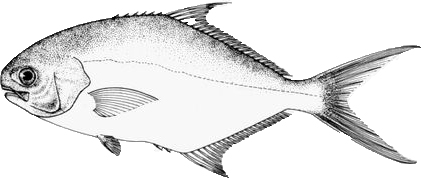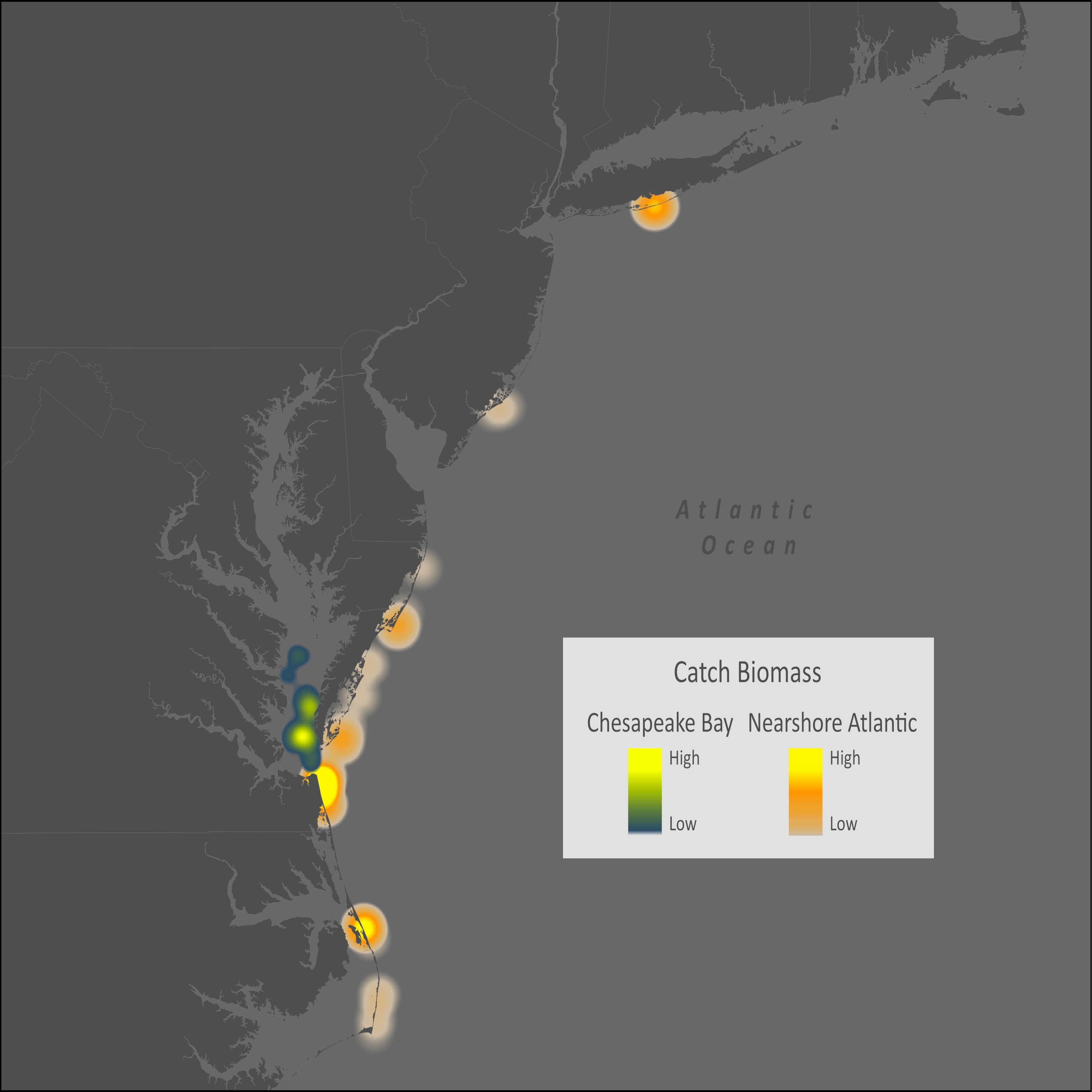Florida Pompano - Trachinotus carolinus
*Information from FAO Species Identification Guide Western Central Atlantic*

Size
Maximum uncertain due to past confusion with the larger T. falcatus; unconfirmed report of 5.02 kg; 2.9 kg probable; common to 35 cm fork length at 1.1 kg. All-tackle IGFA world angling record 3.67 kg.
|
Diagnostic characters:
Body short, deep, and compressed, with upper and lower profiles similar and head
profile sloping to a blunt snout. Eye small (diameter contained 3.2 to 5.1 times in head length). Upper jaw very narrow at end and extending to below mideye; lower jaw included. Teeth in jaws small, conical, and recurved, disappearing completely by about 20 cm fork length; no teeth on tongue. Gill rakers 5 to 7 upper, 8 to 14 lower.
|
Habitat, biology, and fisheries
Found in small to large schools along sandy beaches, in inlets, and brackish bays. Probably spawns in oceanic waters; juveniles form immense schools along the beaches of eastern Florida from April to July. Feeds on molluscs, crustaceans, and small fish. Caught commercially with trammel nets and gill nets; also with haul seines and shrimp trawls; caught with light tackle in the surf and on shallow flats. Mostly sold fresh, some frozen; flavour rated as excellent
|
Distribution
From Massachusetts to Brazil; irregularly
occurring in the West Indies (Jamaica,
Puerto Rico, Tobago, Trinidad); erroneously reported from Bermuda. A geminate species,
Trachinotus paitensis (Cuvier), occurs in the eastern Pacific.
|



